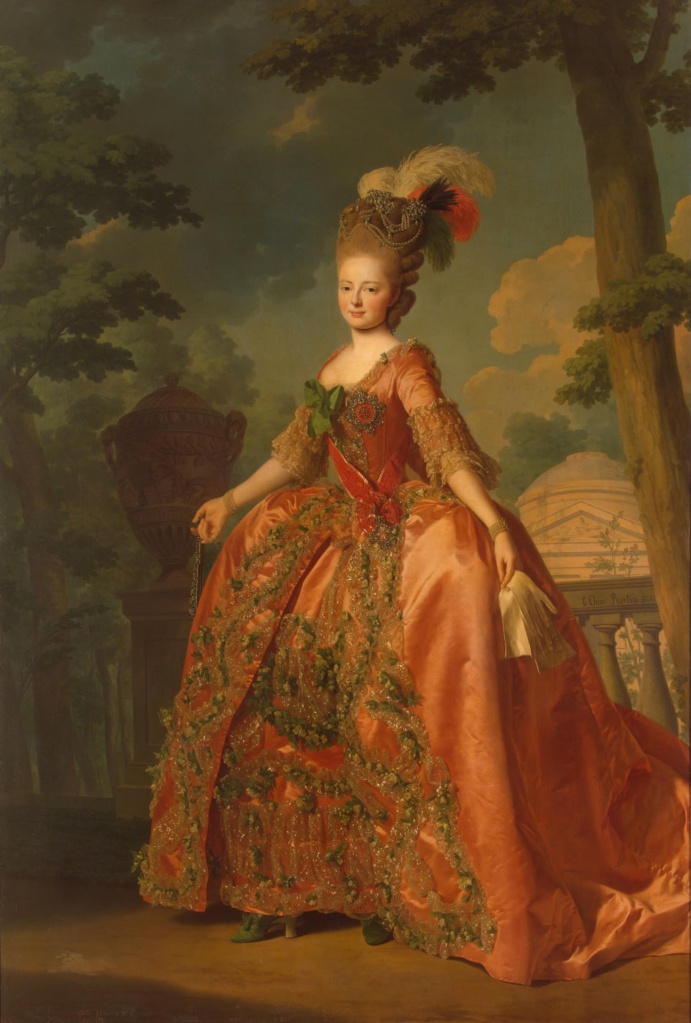
Empress Maria Feodorovna, born Duchess Sophie Dorothea of Württemberg (1759-1828), second wife and consort of Tsar Paul I. Daughter of Friedrich Eugen, Duke of Württemberg, and his wife, Princess Friederike of Brandenburg-Schwedt. Married in 1776; had ten children, of whom two became Emperors of Russia: Alexander I and Nicholas I. Excluded from politics during the reign of her mother-in-law, Catherine the Great, but played an influential role as Empress and Dowager Empress.
Figure 1.1. Alexander Roslin (Swedish), Portrait of Grand Duchess Maria Feodorovna (Sophie Dorothea of Württemberg), 1777, oil on canvas, 265 x 178 cm, The State Hermitage Museum, St. Petersburg, ГЭ-1357, source: Hermitage.
A substantial number of garments from Empress Maria Feodorovna’s wardrobe continue to exist. In particular, the Pavlovsk State Museum, located on the estate where she resided during her years as a Grand Duchess, offers a rich and varied collection of outfits dating from the eighteenth and nineteenth centuries.
18th century
Morning dress

Russian court dresses
Russian court dress, or habit de cour Russe, as the famed eighteenth-century couturière Rose Bertin (1747-1813) called it, was one of Catherine the Great’s (1729-96) sartorial innovations. In 1775, she decreed that Russian court dress be worn at all court ceremonies, such as those held in observance of religious holidays, to mark visits by foreign dignitaries, or to celebrate the monarch’s birthday. All the ladies of the court—the Empress, her daughter-in-law the Grand Duchess Maria Feodorovna, her granddaughters, ladies-in-waiting and maids of honour—were required to wear this outfit.1

As a rule, Russian court dress consisted of two parts, namely, an over-dress (usually coloured) and a white under-dress. The over-dress often had long, dangling false sleeves that were attached at the back of the armholes and fell down the back of the gown; the sleeves of the under-dress were inserted through the armholes of the upper dress, in a manner reminiscent of ethnic Russian dress of the sixteenth and seventeenth centuries. Another so-called “Russian” feature was a decorative belt that was tied in front on one side of the waist.2
Crucially, however, Russian court dress tended to conform to prevailing Western fashions in both silhouette and construction. The over-dress was in fact worn over a typical eighteenth-century European dress comprising a boned bodice and a petticoat or skirt supported by paniers (side hoops).

Various portraits by Jean-Louis Voille (1744-1803), of which figure 1.4 is an example, show that Maria Feodorovna favoured Russian court gowns with elbow-length sleeves, trimmed with rows of laces.3 This preference can also be seen in extant dresses, like the gown from Pavlovsk State Museum pictured in figure 1.5.
Dresses made of striped material came into vogue in Russia during the 1780s-90s,4 and Maria Feodorovna embraced this new trend, as the court gown at the Hermitage indicates (see figure 1.3).

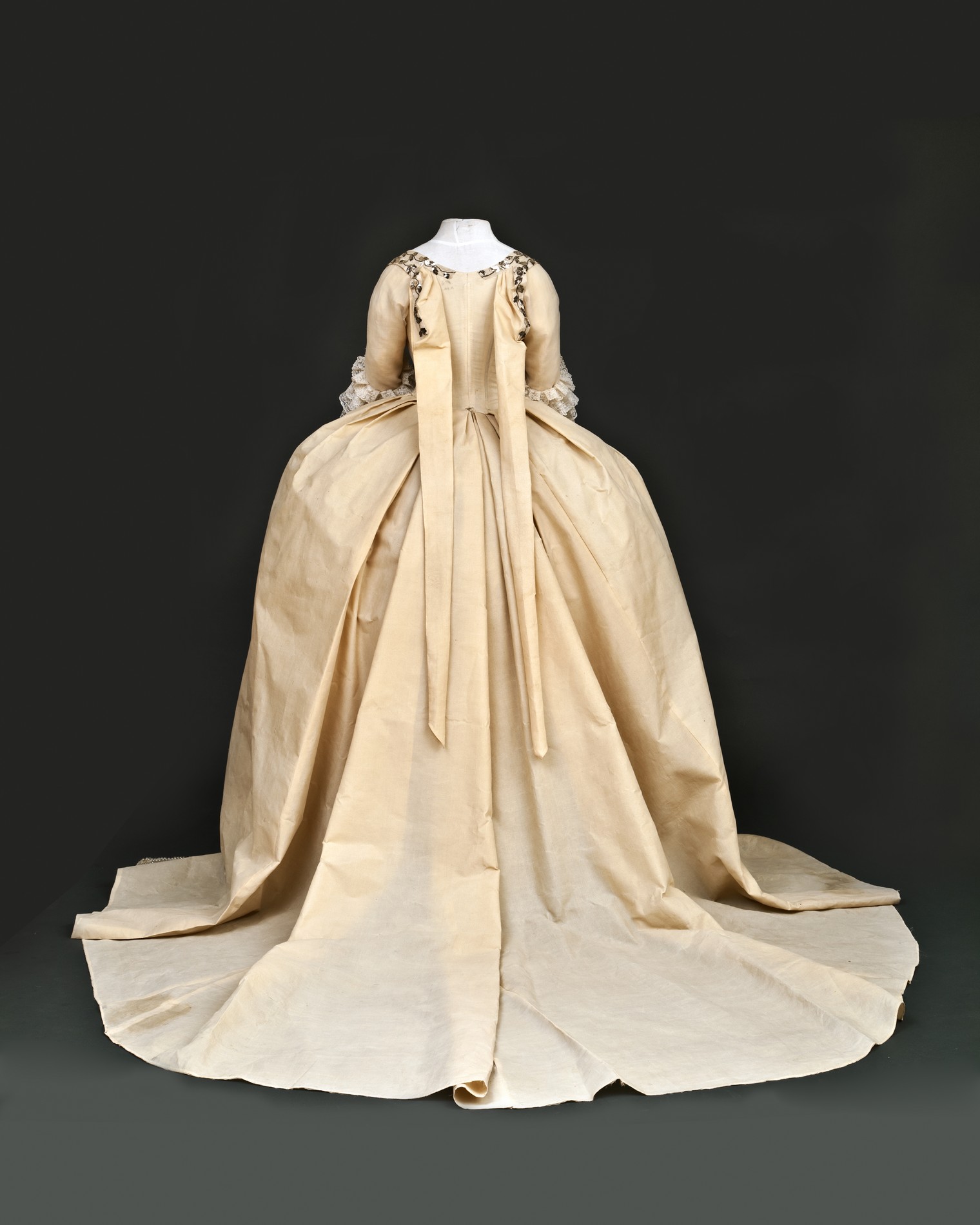
Coronation bodice, 1796
The coronation of Emperor Paul I (1754-1801) and his consort, Empress Maria Feodorovna, took place on April 5th, 1797. Only the bodice (figure 1.6) and the train of her coronation dress have survived; the skirt is missing. The dress takes the form of a French robe de cour, traditionally also worn by other European consorts for their coronation in the eighteenth century, rather than a Russian court dress.
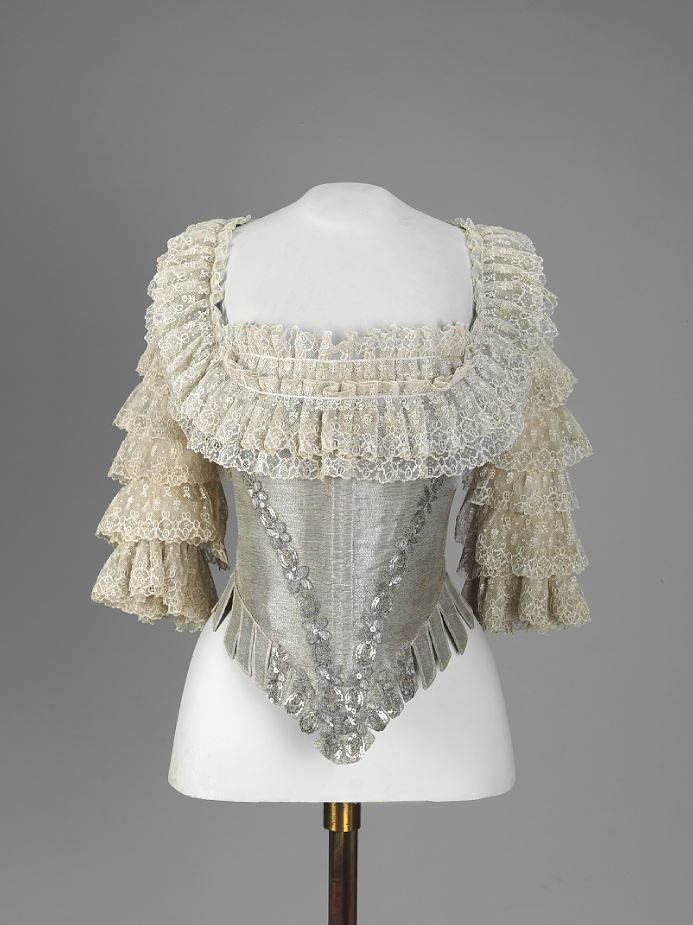
Order of St. Catherine uniform
In 1714, Peter the Great (1672-1725) founded the Order of St. Catherine, making his second wife, Empress Catherine I (1684-1727), the first Grand Mistress of the Order, which was exclusively for women. It was a position she and every subsequent Russian empress, even if she were a dowager empress, would hold for life.5
The Order consisted of two classes, the Grand Cross and the Lesser (Small) Cross. Every Russian grand duchess became a Dame Grand Cross upon her christening or upon her marriage into the Romanov family, whereas princesses of the Imperial Blood were inducted into the Order when they reached the age of 18. Members of the Grand Cross were entitled to wear a star and badge of the Order; the badge was worn dangling from the end of a red moiré sash edged with silver.6 Many a portrait of a Russian grand duchess or empress depicts her proudly sporting the insignia of the Grand Cross of the Order; Alexander Roslin’s (1718-93) portrait of Maria Feodorovna (figure 1.1) is one such example.
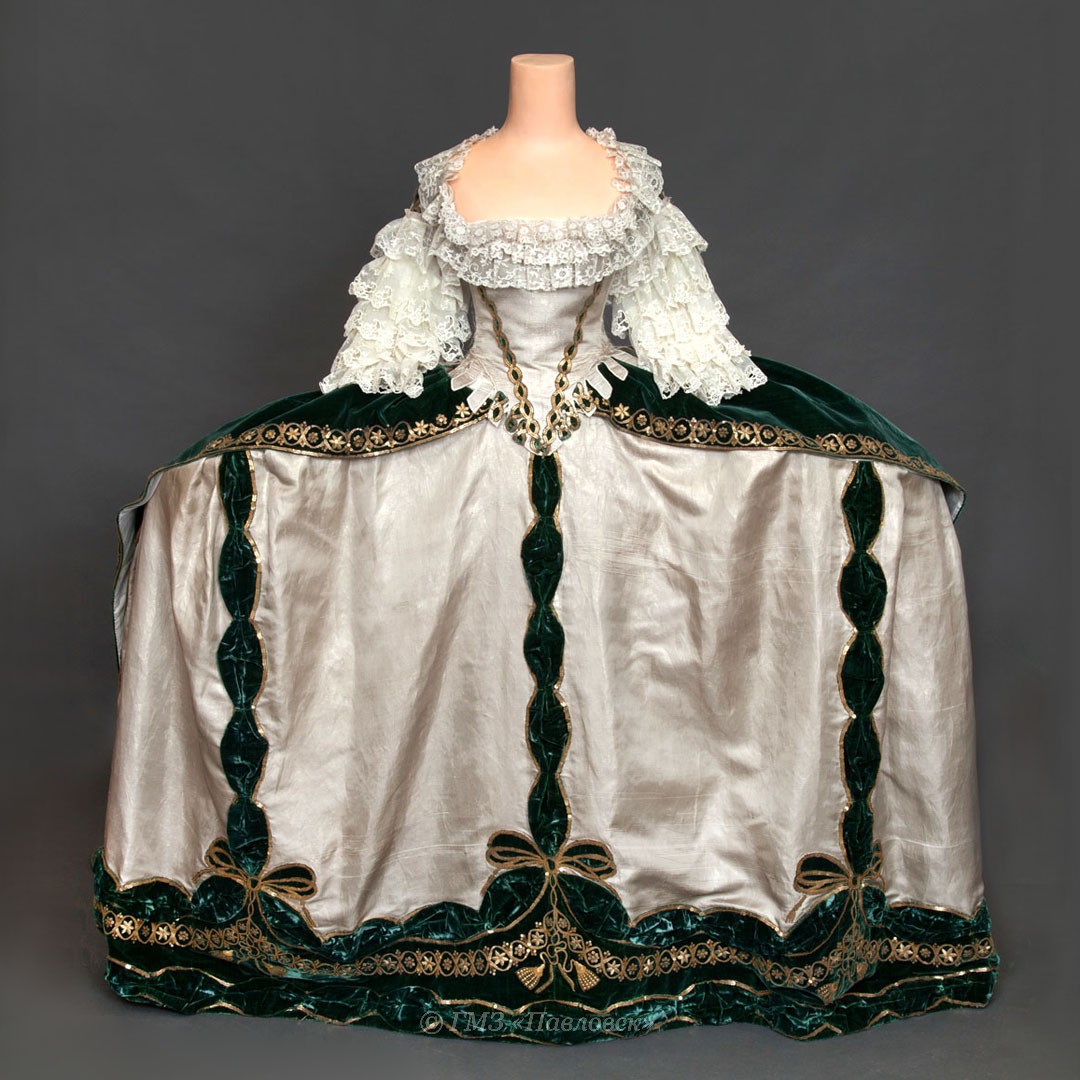
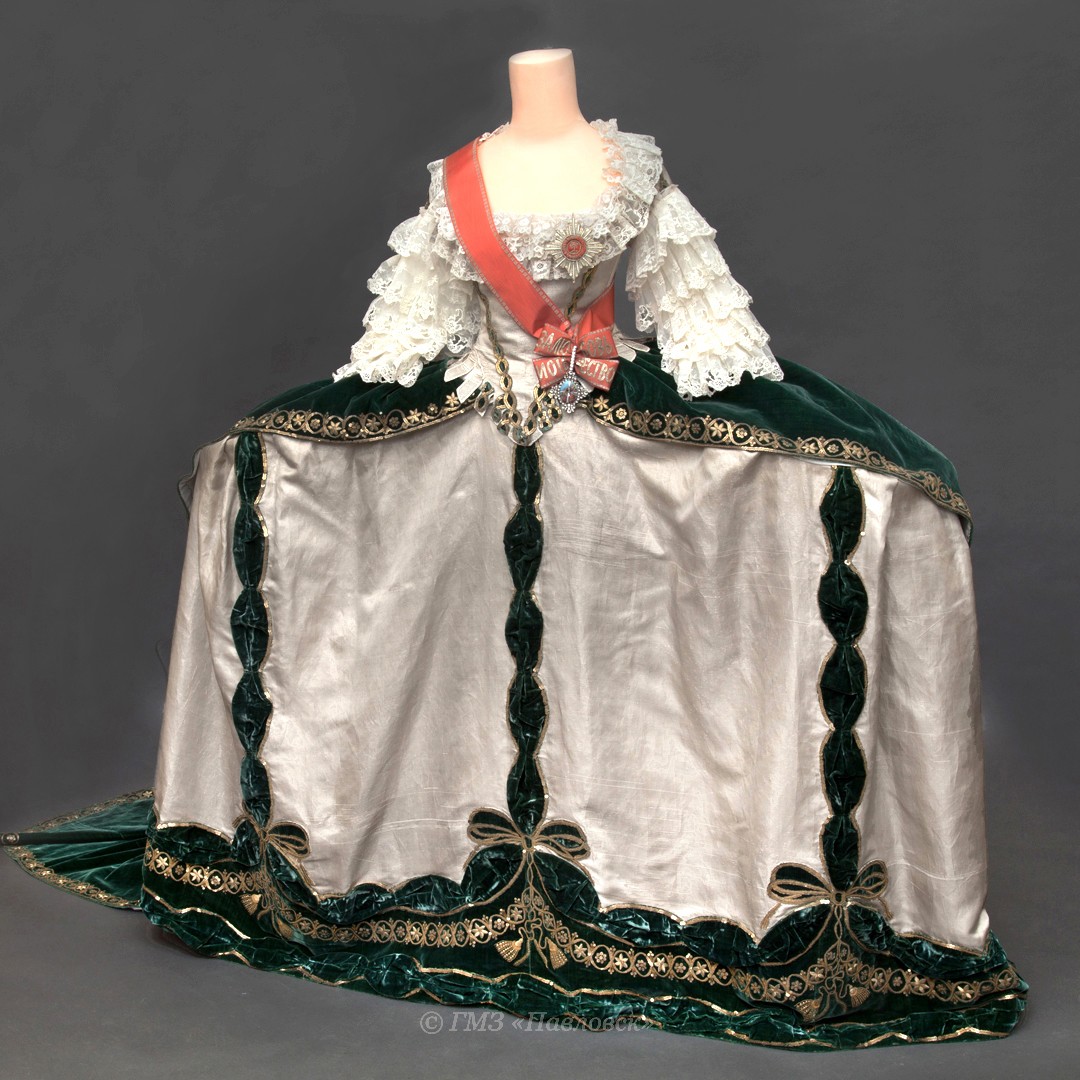
Maria Feodorovna’s Order of St. Catherine uniform, located at Pavlovsk State Museum, dates from the reign of Emperor Paul I,7 when she was Grand Mistress (see figures 1.7 and 1.9). She would have worn it for the Order’s Holiday, which fell on November 24th, when its members met for a Mass and a banquet.8 In accordance with the Statute of April 5th, 1797, signed by Paul I, all the ladies of the Order wore dresses of silver brocade trimmed with green velvet, which was ruched in some places and richly embroidered in gold elsewhere; their trains were likewise of green velvet and they each also wore a green velvet hat embellished with a broken Catherine wheel and cross. The Grand Mistress enjoyed the privilege of wearing the longest train and a semicircular hat badge set with diamonds and rubies.9 Figure 1.8 shows a doll from the “Wardrobe of the Office of Orders” whose Order of St. Catherine costume, dating from 1797, coincides very closely in appearance with Maria Feodorovna’s Grand Mistress uniform.

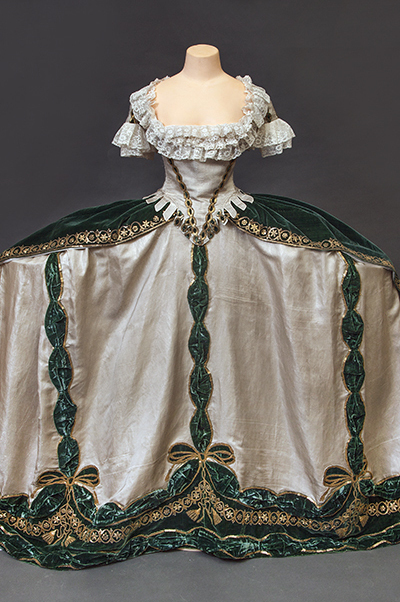
Surprisingly, Maria Feodorovna’s ceremonial costume is the only Order of St. Catherine uniform still in existence in Russia today.10 Given the size of the membership,—in addition to the Romanov ladies, there were 12 Dames Grand Cross, who were members of foreign ruling dynasties, and 94 Dames Lesser Cross—one would have expected more Order robes to have survived. On the other hand, members did value their diamond-studded stars and badges, symbols of a prestigious sisterhood that extended beyond Russia’s borders. When the last Russian empress, Alexandra Fyodorovna (1872-1918), and her daughters went into exile in Siberia in 1917, they took their stars and badges with them; these were recovered in 1933.11
The dress at the Pavlovsk State Museum is also remarkable for a number of other reasons. Firstly, it is believed to have been made in the workshop of Rose Bertin, Queen Marie Antoinette’s (1755-93) so-called “Minister of Fashion,” and is therefore a rare extant example of Bertin’s handiwork. Secondly, it is also special as a grand habit de cour and, moreover, one whose three major components (bodice, petticoat and train) have survived intact, since not many such garments are known to still exist today, in a comparable state of completeness or condition.
19th century
Evening-wear

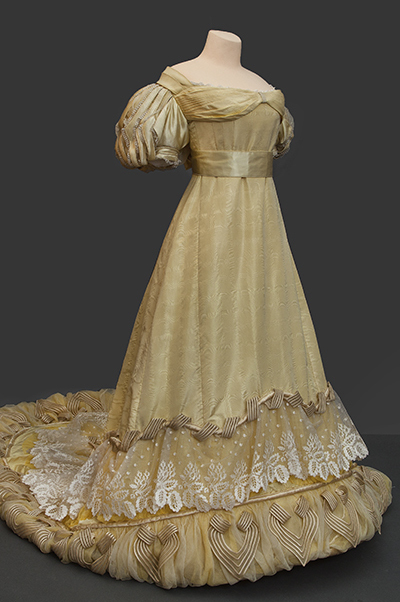
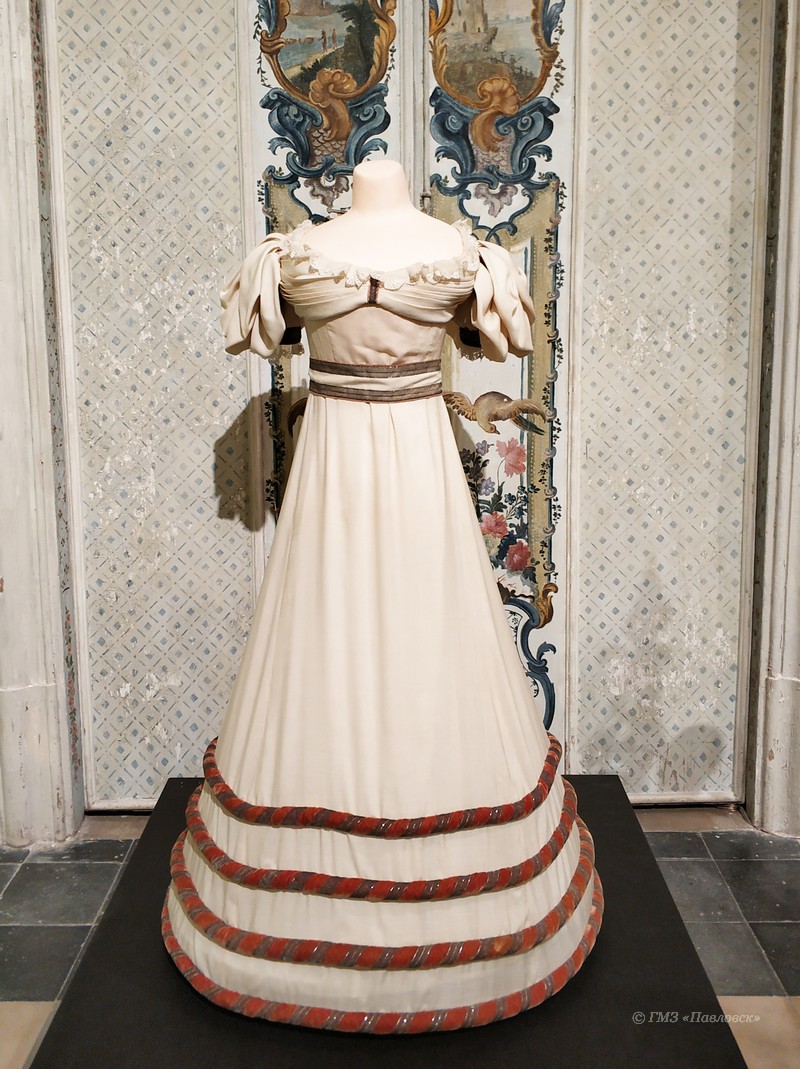
Dress worn on night of Paul I’s assassination

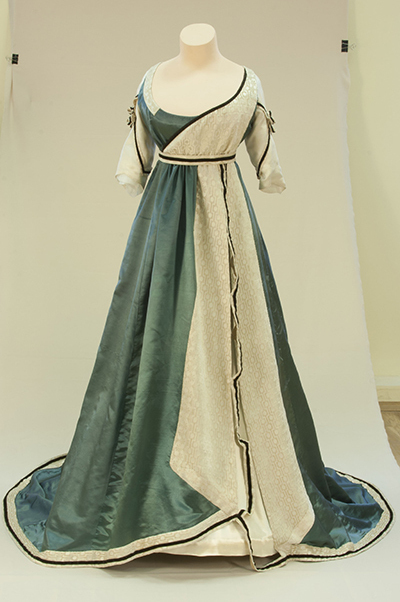
Court dresses


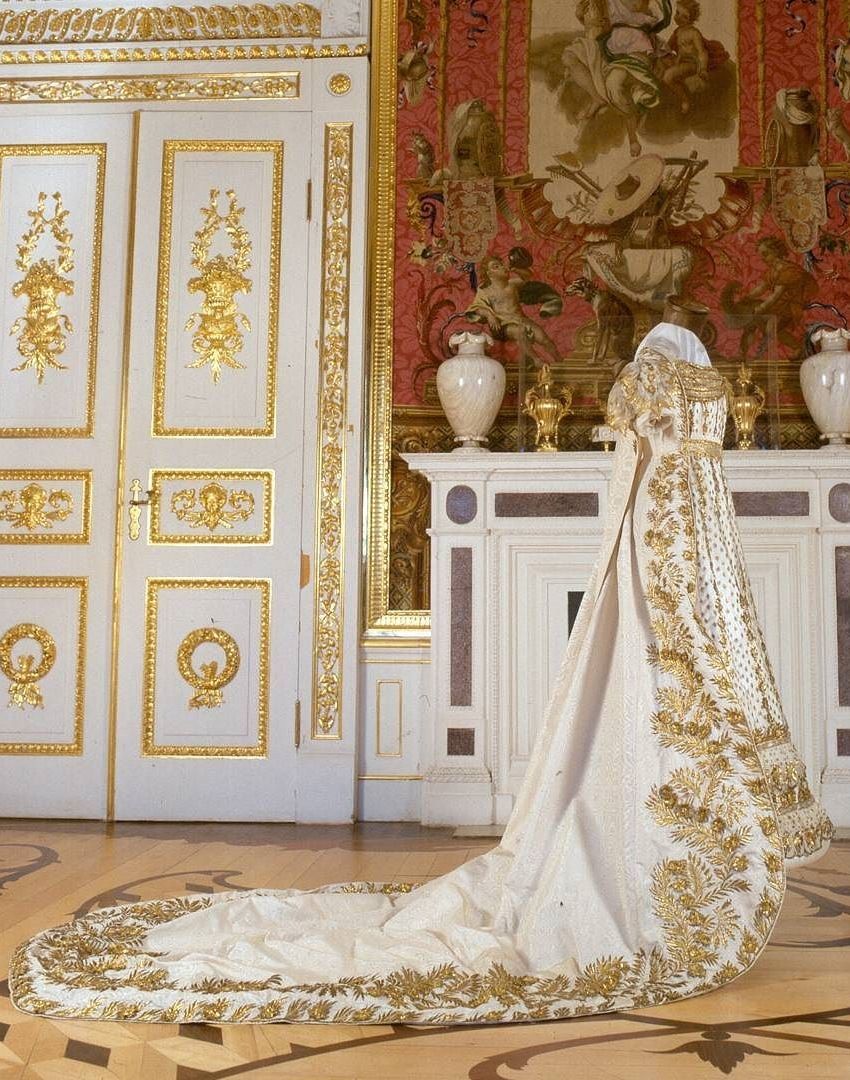
Notes
1. Ksenia Borderiu, Plat’ye imperatritsy. Yekaterina II i yevropeyskiy kostyum v Rossiyskoy imperii (Moscow: Novoe literaturnoe obozrenie, 2016), sec. 1.3; Elisabeth Daubrais, “18e: La robe de cour Russe (Russian court dress),” Temps d’élégance (blog), March 7, 2016, https://tempsdelegance.com/18e-la-robe-de-cour-russe-russian-court-dress/.
2. Borderiu, sec. 1.3.
3. Ibid., sec. 1.3.
4. Ibid., sec. 1.3.
5. Nick Nicholson, “A History of the Order of St. Catherine,” Alexander Palace Time Machine, accessed February 20, 2021, https://www.alexanderpalace.org/palace/OrderStCat.php.
6. Ibid.
7. N.M. Vershinina, “Plat’ye Nachal’nitsy Ordena Svyatoy Yekateriny,” The State Museum Pavlovsk, accessed February 20, 2021, http://pavlovskmuseum.ru/about/palace/masterpieces/2496/.
8. Nicholson.
9. Nicholson; Vershinina.
10. Vershinina.
11. Nicholson.
Bibliography
Borderiu, Ksenia. Plat’ye imperatritsy. Yekaterina II i yevropeyskiy kostyum v Rossiyskoy imperii. Moscow: Novoe literaturnoe obozrenie, 2016.
Daubrais, Elisabeth. “18e: La robe de cour Russe (Russian court dress).” Temps d’élégance (blog), March 7, 2016. https://tempsdelegance.com/18e-la-robe-de-cour-russe-russian-court-dress.
Nicholson, Nick. “A History of the Order of St. Catherine.” Alexander Palace Time Machine, accessed February 20, 2021. https://www.alexanderpalace.org/palace/OrderStCat.php.
Vershinina, N.M. “Plat’ye Nachal’nitsy Ordena Svyatoy Yekateriny.” The State Museum Pavlovsk, accessed February 20, 2021. http://pavlovskmuseum.ru/about/palace/masterpieces/2496/.